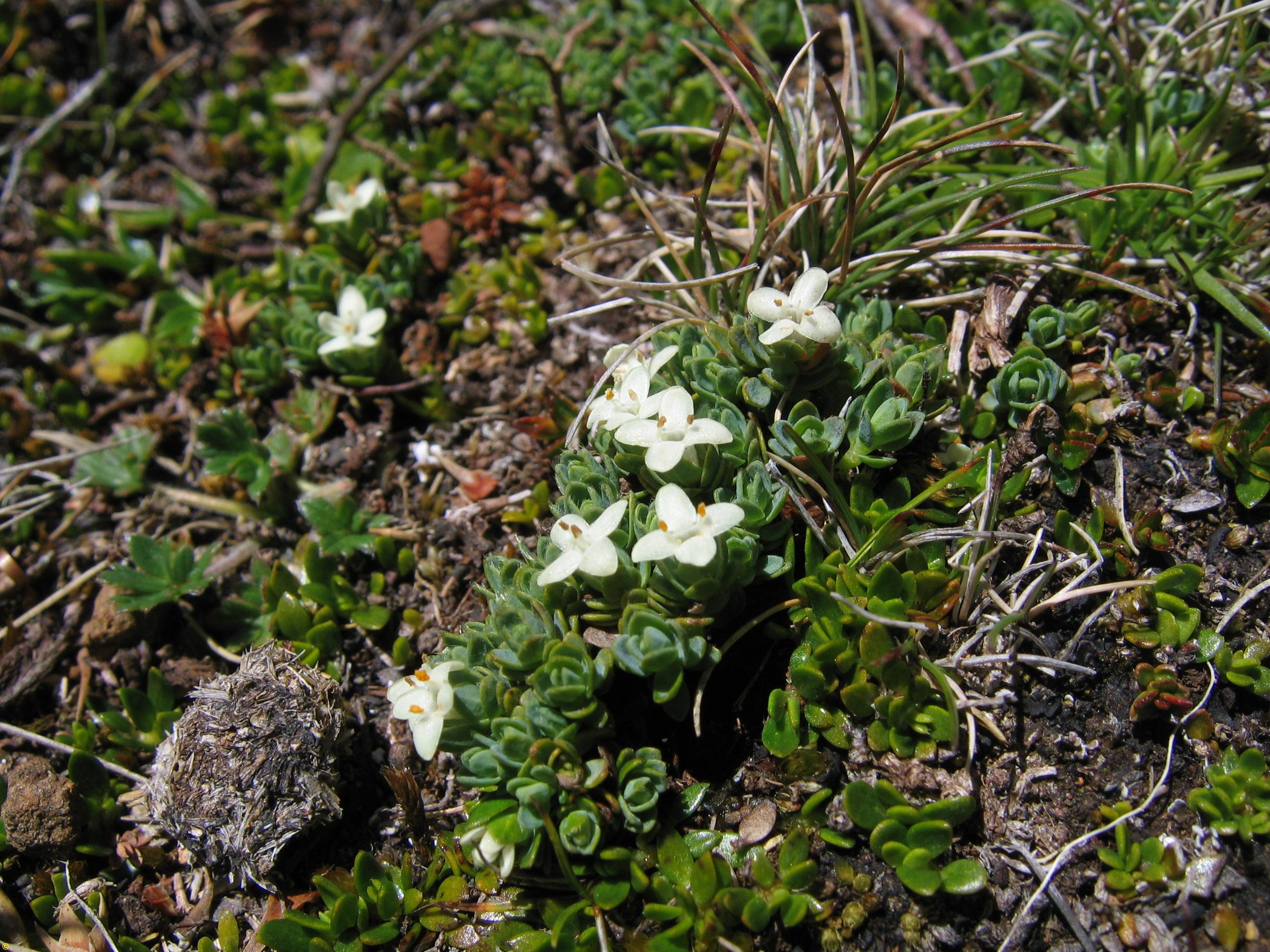Scientific Name: Pimelea pygmaea Endemic Having a natural distribution confined to a particular geographic region
Common Name: alpine riceflower
Family Classification (Clade): Eudicots
Family: Thymelaeaceae
Form Description: Cushion-like dwarf shrub.
Height (m): 0.02 – 0.05
Flowers: Flowers to about 0.8cm long, white, solitary, terminal, often profuse, exterior free of hairs.
Fruit: Drupe
Municipality
Plant Communities
Habitat Notes
Occurs in sub-alpine moorland in central Tasmania.
Site Tolerance
Exposed, Moist, Windy
Soil Tolerance
Loam, Nutrient-poor, Well-drained
Frost Tolerance
Hardy
General Notes
Could be a very useful plant for rockeries or containers but may not flower well at lower altitudes. Must have an open aspect to succeed. Tolerates frost and heavy snowfalls and requires acidic soils. Resistant to Phytophthora cinnamomi.
Propagation Calendar
-
Flowering Month
Jan Feb Mar Apr May Jun Jul Aug Sep Oct Nov Dec -
Seed Collecting Month
Jan Feb Mar Apr May Jun Jul Aug Sep Oct Nov Dec -
Sowing Month
Jan Feb Mar Apr May Jun Jul Aug Sep Oct Nov Dec -
Cutting Month
Jan Feb Mar Apr May Jun Jul Aug Sep Oct Nov Dec
Propagation Method
Seed Information
Seed Collection
Very difficult to grow from seed. Seed releases very quickly once ripe. Slightly immature fruit can be harvested and allowed to mature in a warm position. Rub on wire screens to remove outer coverings.
Seed Treatment Method
Smoke Smoke treatment improves germination in some species. Smokey products, e.g. smokey vermiculite, can be purchased and applied to the sown seed, or sown seeds can be treated directly with smoke from a source such as a drum with a fire and hose.
Seed Treatment Notes
Smoke treatment has improved results slightly for some species. Some success has also been reported with burning of small twigs and leaf litter on top of seed; results erratic. May respond to combination of heat and smoke.
Cutting & Division Information
Can be grown from cuttings. Care should be taken not to strip back the young bark.
